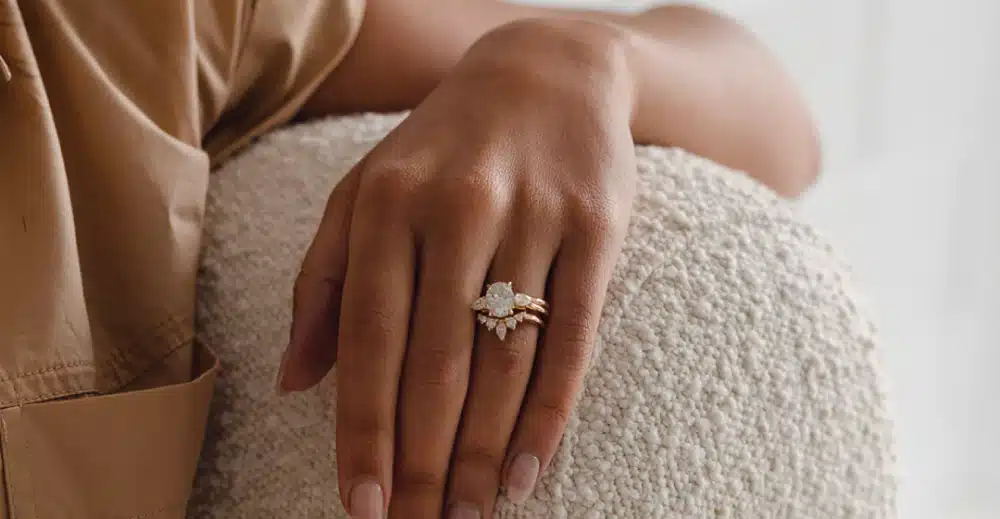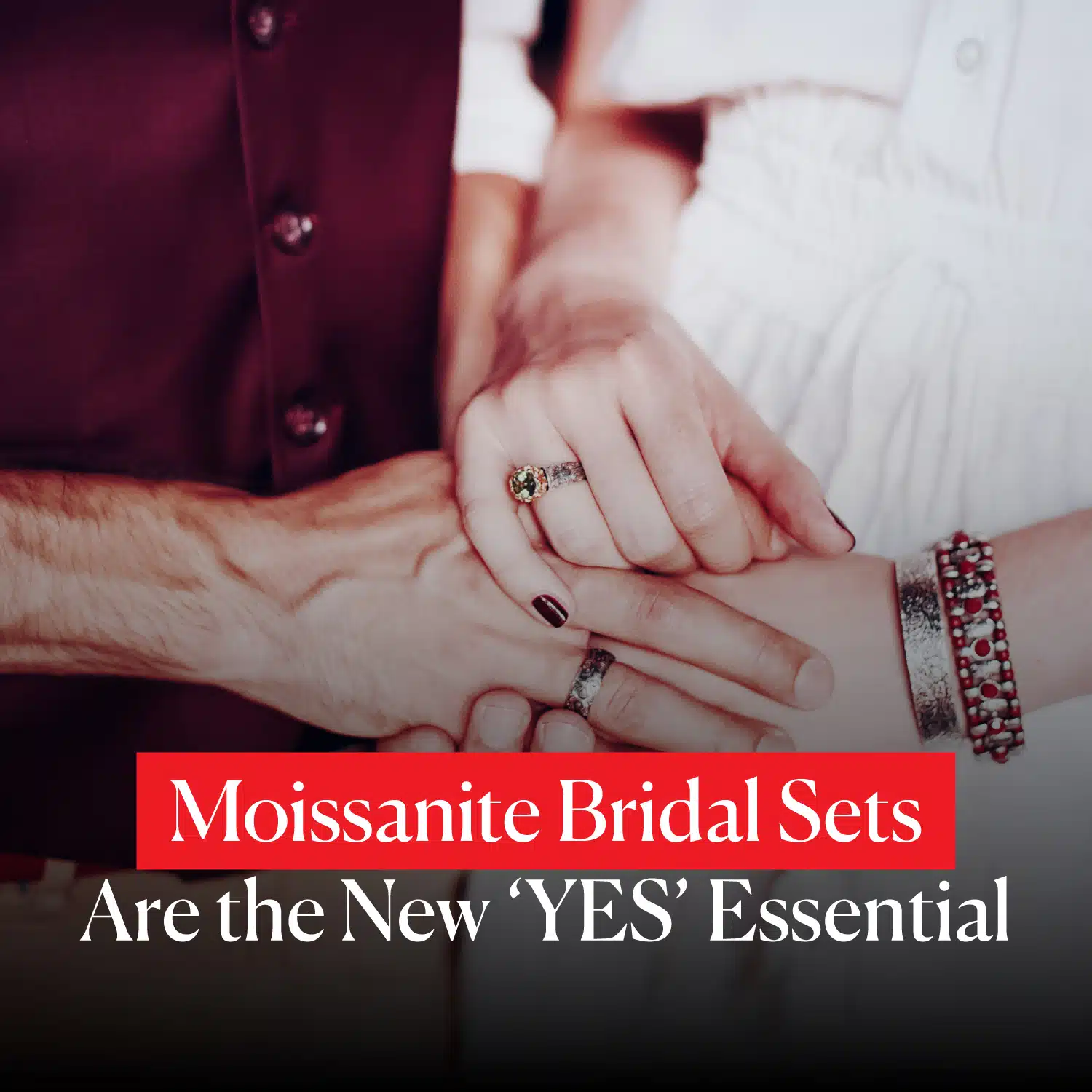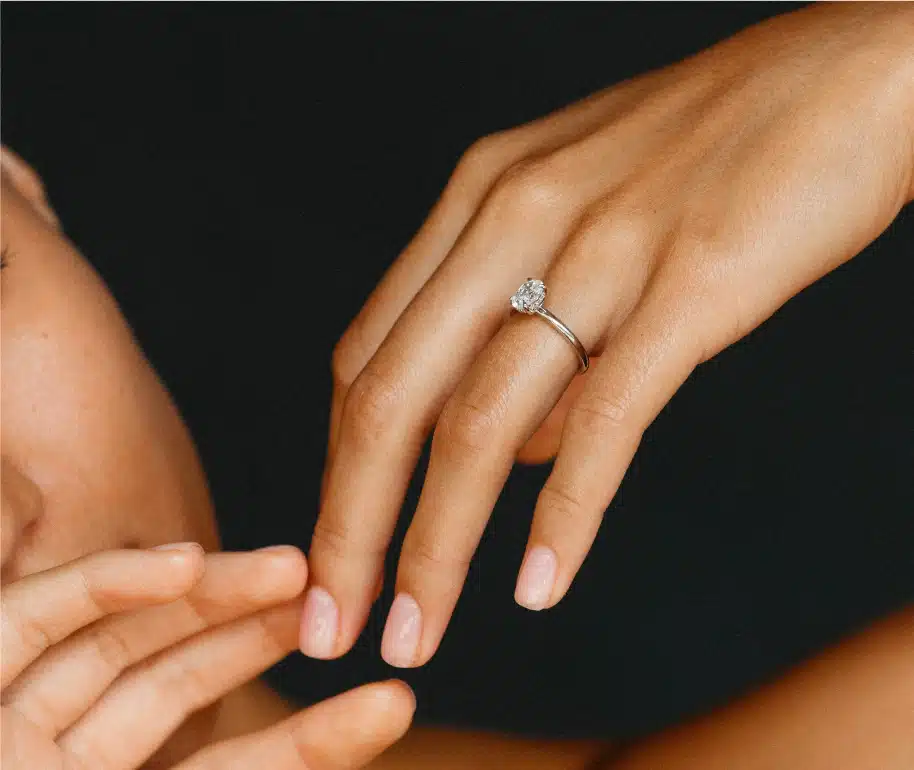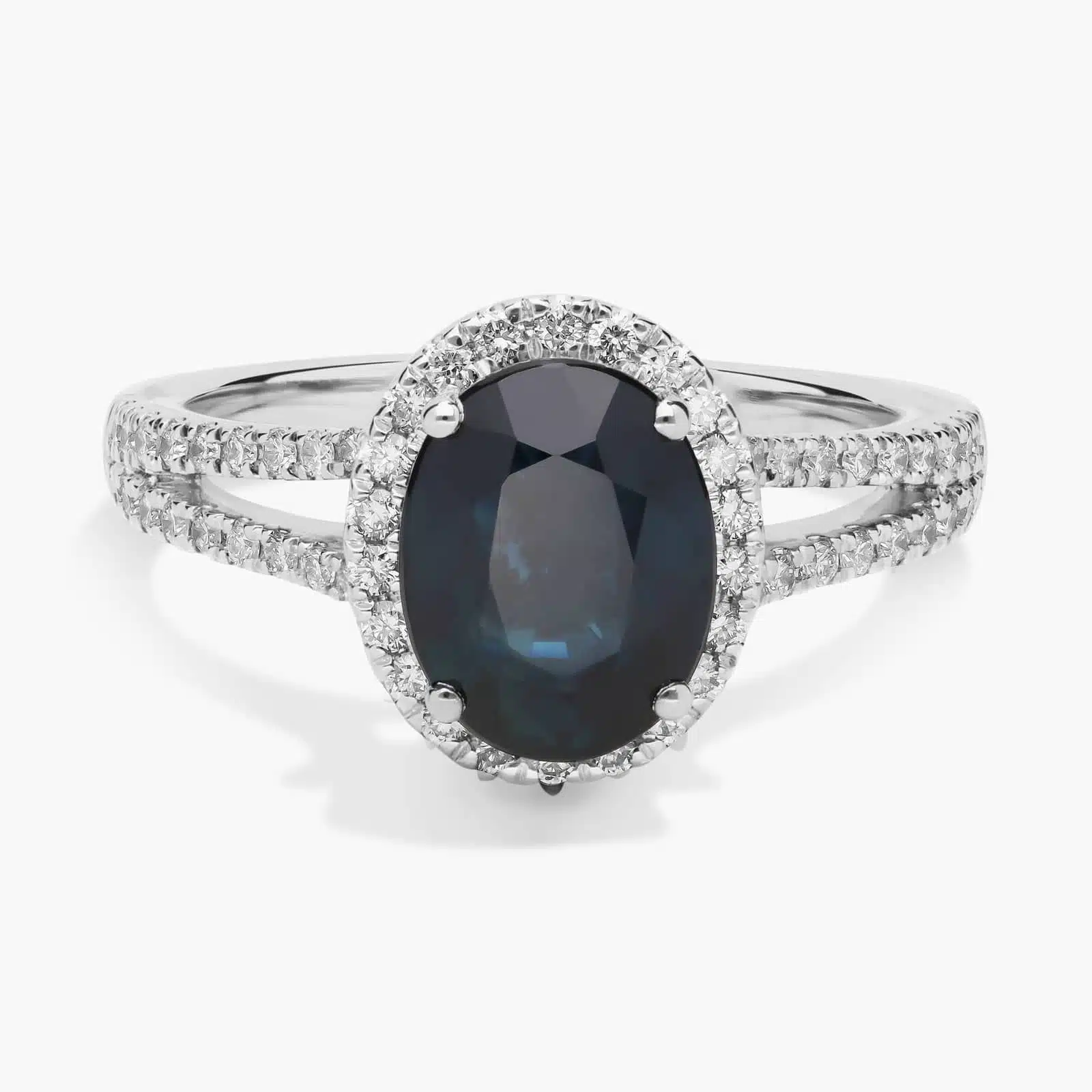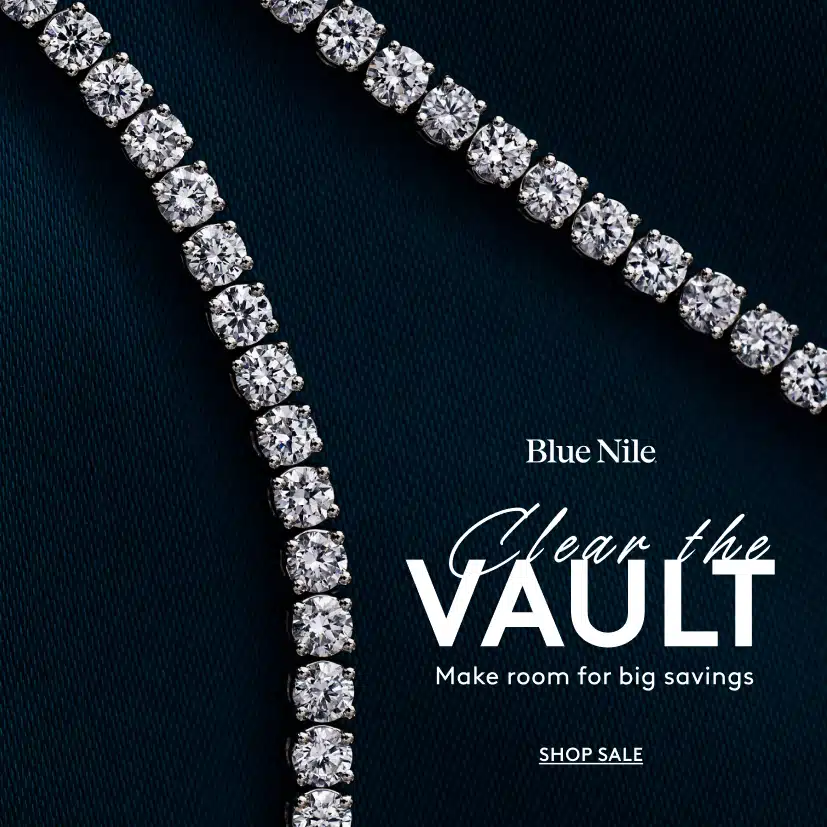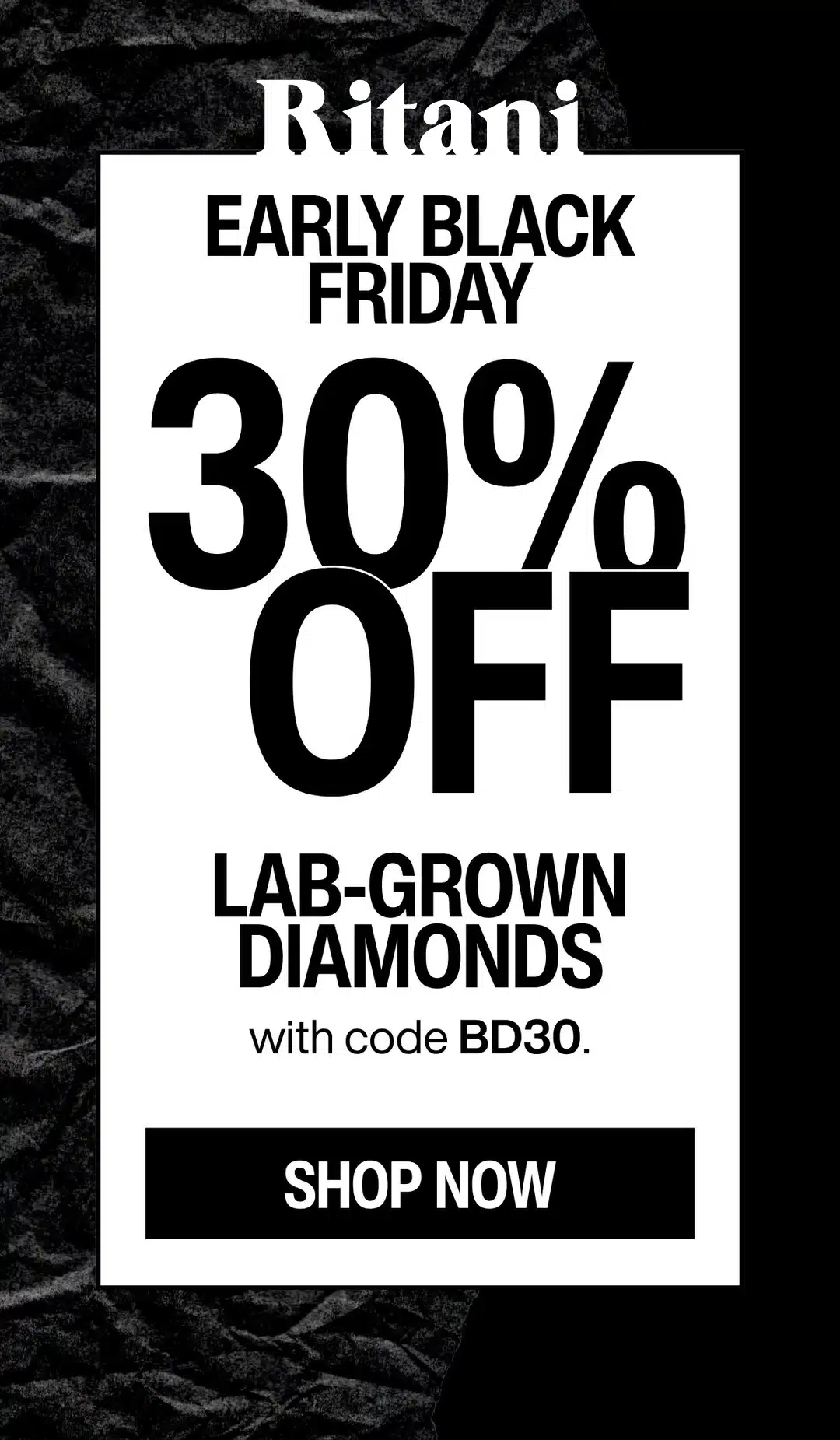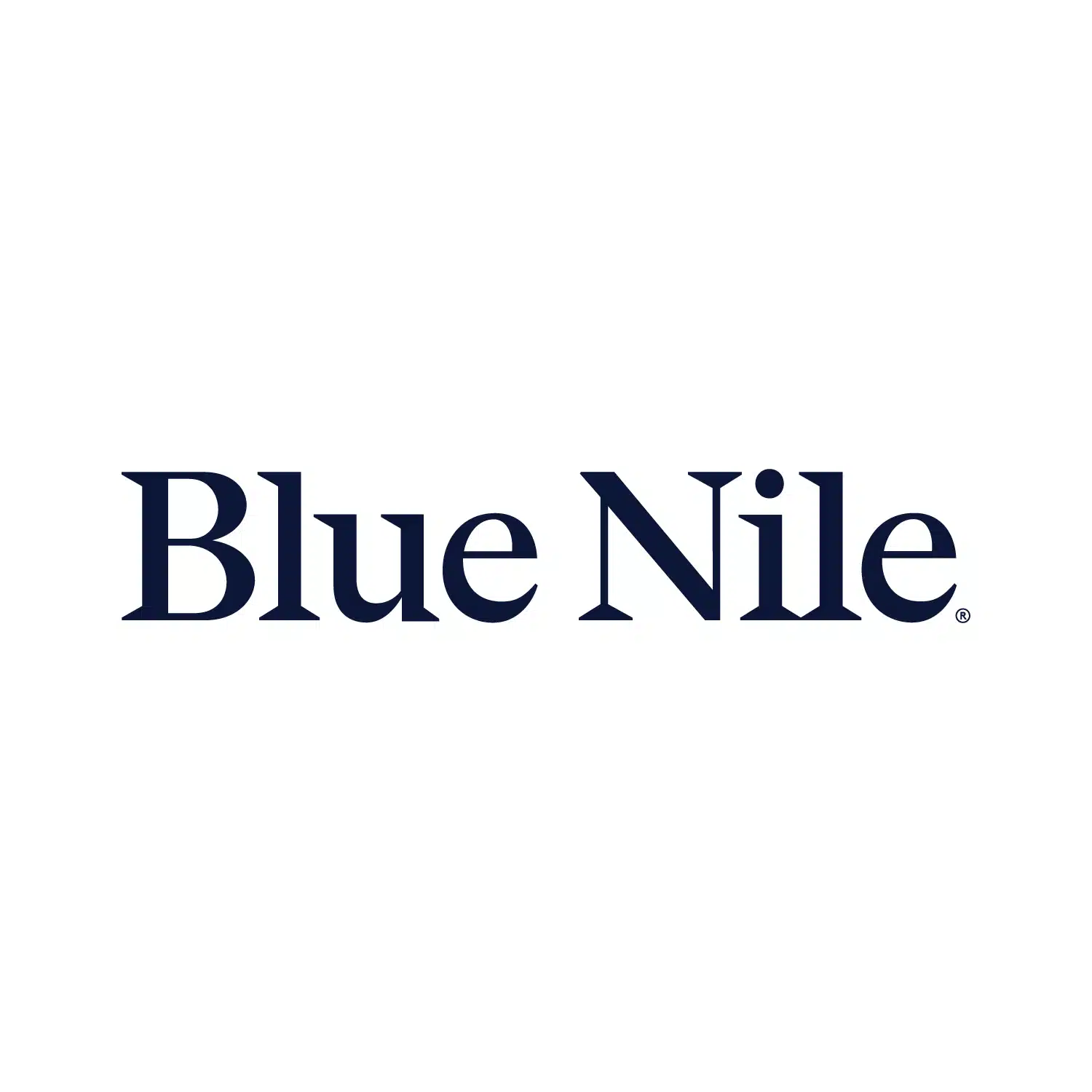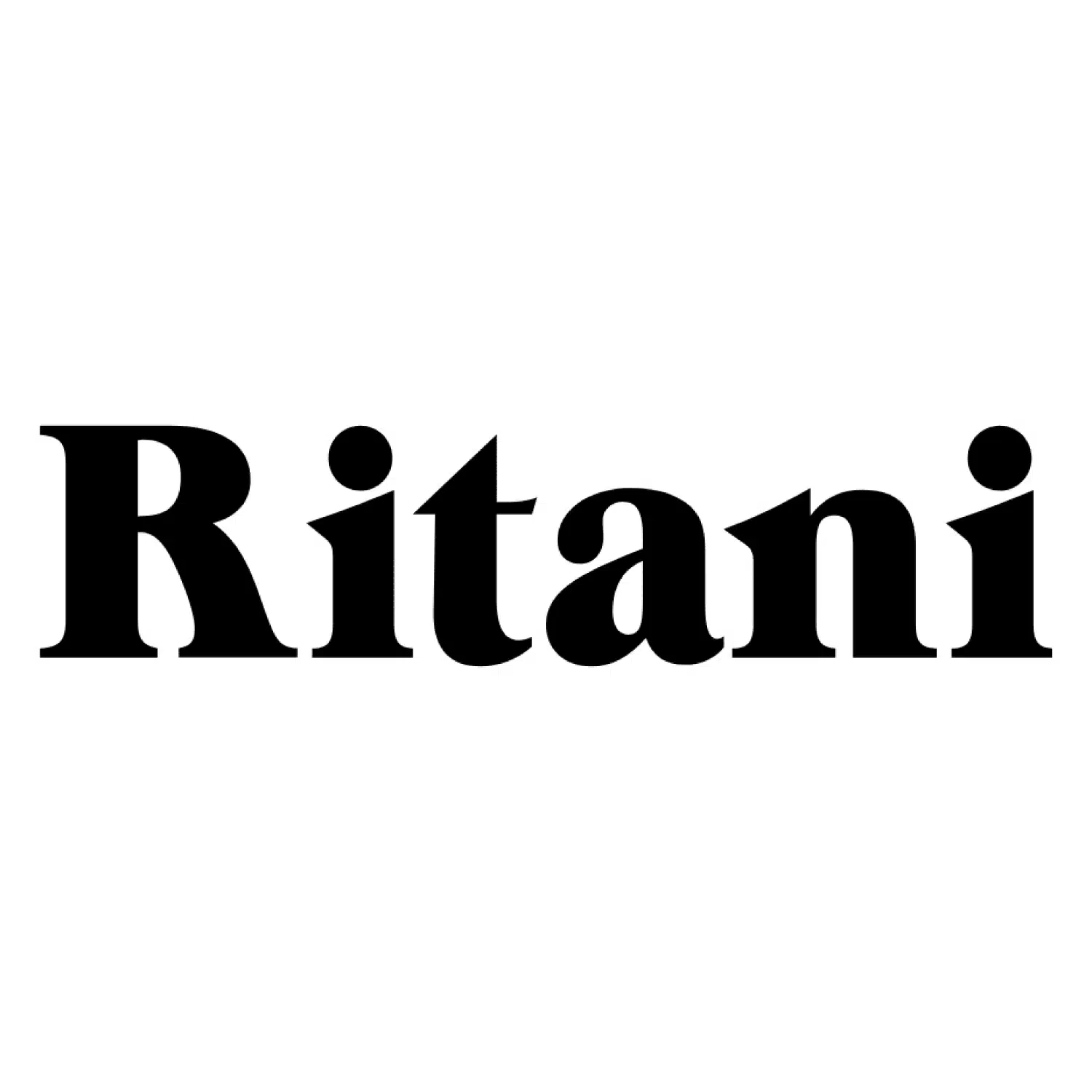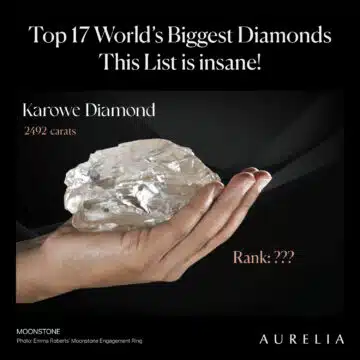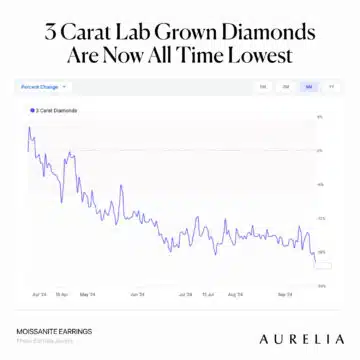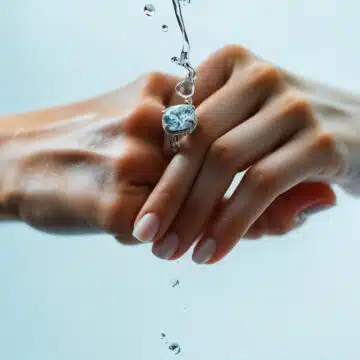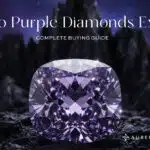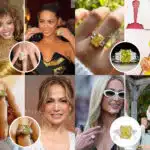When you’re shopping for a diamond, you’ll likely hear about the “4 Cs of Diamonds”—Cut, Color, Clarity, and Carat. These are the main factors that affect both the look and the price of your diamond.
While you might think the size (carat weight) or color is the most important, diamond cut is actually the game-changer when it comes to sparkle. Just like how a polished mirror reflects light better than a dull one, a well-cut diamond reflects light beautifully, making it look brighter and more brilliant.
So, why does this matter? Because knowing the diamond cut chart will help you make smarter decisions and get more value for your money. Want to know why a diamond’s cut is more important than its size or color? By the end of this article, you’ll see how understanding the cut can give you a diamond that sparkles like no other.
Want to explore more about how the other factors come into play? Check out our diamond grading chart for more insights on the 4 Cs.
- What Is the Diamond Cut Chart?
- Why Cut Is More Important Than Carat, Color, and Clarity
- Diamond Cut Chart Breakdown: How to Choose the Best Cut for You
- Best Retailers for Buying Diamonds Based on Cut Quality
- Factors That Affect Diamond Cut Quality
- How to Identify a Great Cut Diamond
- FAQs About Diamond Cut Chart
What Is the Diamond Cut Chart?

When you’re looking at diamonds, the diamond cut chart is one of the most important tools to understand. It shows you how well a diamond has been cut to reflect light, which directly affects how sparkly the diamond looks.
The quality of the cut is more than just the shape of the diamond; it includes the proportions and angles that allow it to shine at its best.
Let’s break it down into simpler parts so you can see why diamond cut grades and diamond proportions are crucial to choosing the perfect diamond.
Diamond Cut Grades
Diamonds are graded on a scale that ranges from Excellent to Poor, and each grade represents how well the diamond has been cut. This is different from the diamond’s shape (round, princess, etc.). The cut grade focuses on how the diamond’s facets interact with light.
- Excellent: This grade means the diamond has been cut with perfect proportions and will reflect the most light, making it sparkle the most.
- Very Good: A slightly less-than-perfect cut that still reflects plenty of light.
- Good: A diamond with this cut may not reflect as much light but will still look beautiful.
- Fair and Poor: These diamonds have cuts that are too deep or too shallow, causing light to leak out, which makes them appear duller.
The cut grade directly influences the diamond’s brilliance and fire. This means that a diamond with an excellent cut can appear more sparkling than one that’s larger or more expensive but has a poor cut.
Diamond Proportions
When we talk about diamond proportions, we’re referring to the key measurements that make up the diamond’s shape, like its depth, table, and angles. Getting these proportions right is vital to achieving maximum brilliance.
Here are the main components:
Depth: This is how deep the diamond is from top to bottom. If it’s too deep or too shallow, it won’t reflect light properly.

Table: The flat top of the diamond that allows light to enter. The size of the table should be proportionate to the rest of the diamond.

Angles: The angles of the diamond’s facets determine how light will bounce off. Too steep or too shallow an angle can cause light leakage, reducing brilliance.
When these proportions are balanced correctly, the diamond will reflect and refract light in a way that maximizes its sparkle. For example, a well-cut diamond from Blue Nile will look far more brilliant than a poorly cut diamond, even if both have the same carat weight.
Why Proportions Matter
The right proportions ensure that light enters the diamond, bounces off the internal facets, and then exits to give you that dazzling sparkle. If the proportions are off, light will escape from the bottom or sides of the diamond, making it appear duller.
To help visualize, imagine the light bouncing inside a diamond like a game of pinball. The better the angles and depth, the more times the light hits a facet before exiting, making the diamond sparkle more.
Examples of Diamonds with Different Cuts
- A diamond with an Excellent cut from James Allen will be highly reflective and dazzling. It can easily compete in sparkle with larger diamonds, even if it’s smaller in size.
- In contrast, a diamond with a Good cut from Ritani might look fine at first glance, but its overall brightness won’t compare to a well-cut one. It may appear more like a dull stone under certain lighting conditions.
Cut Proportions vs. Carat Weight vs. Price
Here’s something you won’t see in many other blogs—a quick comparison of how the diamond cut affects the overall price and appearance of diamonds from top retailers like Blue Nile, James Allen, and Vrai.
| Cut Grade | Carat Weight | Price (Example) | Brilliance | Visual Appearance | Store Example |
|---|---|---|---|---|---|
| Excellent | 1.0 Carat | $5,200 | High | Extremely brilliant and fiery | Blue Nile |
| Very Good | 1.0 Carat | $4,200 | High | Sparkles well, but not as much as Excellent | James Allen |
| Good | 1.0 Carat | $3,500 | Medium | Appears duller under direct light | Ritani |
| Fair | 1.0 Carat | $2,800 | Low | Much less sparkle, noticeable dullness | Vrai |
As you can see, even though these diamonds have the same carat weight, the cut directly impacts their appearance and price. A well-cut diamond will cost a bit more, but it will also look much better and offer a greater overall value.
Diamond IQ Test: Natural or Lab-Grown?
Two identical diamonds: GIA Certified, 1.51ct, D Color, VVS1, Ideal Cut. One is natural ($16,530), the other is lab-grown ($2,390). Choose the diamond you like better and see if you can match it to its origin.
Why Cut Is More Important Than Carat, Color, and Clarity
When people shop for a diamond, they often focus on carat weight, assuming a bigger diamond is better. Others prioritize color and clarity, believing a perfect-looking diamond is worth the premium price. But in reality, the cut is the only factor that directly affects how much a diamond sparkles—and that’s what makes a diamond look stunning.
1. Carat Weight: A Bigger Diamond Doesn’t Mean a More Beautiful Diamond
Carat weight refers to how heavy a diamond is, but it does not determine how much a diamond sparkles. Two diamonds of the same carat weight can look completely different depending on their cut.
Why Cut Is More Important Than Carat:
- A poorly cut diamond can look smaller than its actual carat weight because it fails to reflect light properly.
- A well-cut diamond can appear larger than a poorly cut diamond of the same weight because it maximizes light return.
Case Study:
- A 1.2-carat diamond with a Good cut may have less brilliance than a 1.0-carat diamond with an Excellent cut from James Allen.
- The 1.0-carat Excellent Cut diamond will actually look bigger and brighter than the 1.2-carat Good Cut diamond due to better proportions and light reflection.
Key takeaway: Instead of paying extra for more carat weight, you can save hundreds to thousands of dollars by choosing a smaller but better-cut diamond that will still look stunning.
2. Color: A Well-Cut Diamond Can Appear Whiter Than It Is
Diamond color is graded from D (colorless) to Z (light yellow/brown). Many people assume that a higher color grade (D-F) is necessary for a beautiful diamond. But the reality is:
- A diamond with an Excellent cut will reflect light so well that it can make a slightly lower color grade (G-H) appear just as white as a higher-grade diamond.
- The sparkle from a well-cut diamond can mask slight color tints.
Case Study:
- A G-color, Excellent Cut diamond from Blue Nile might cost $4,000 while a D-color, Good Cut diamond could cost $5,500.
- To the naked eye, the G-color diamond will look nearly identical to the D-color one, but you’ll save $1,500.
Key takeaway: You don’t need to pay a premium for a D-color diamond. A well-cut G-H color diamond can still appear beautifully white, even in platinum or white gold settings.
3. Clarity: Cut Can Hide Imperfections
Diamond clarity measures tiny internal flaws (inclusions) and external blemishes. While high clarity grades (like IF or VVS1) are expensive, they’re not always necessary. A diamond’s cut can minimize the visibility of inclusions, making them harder to see.
Why Cut Is More Important Than Clarity:
- A well-cut diamond reflects light in a way that hides inclusions.
- Many inclusions in SI1 or even SI2 diamonds are microscopic and invisible to the naked eye.
Case Study:
- A 1-carat SI1 clarity, Excellent Cut diamond from Vrai may cost $4,800 and look flawless to the naked eye.
- A 1-carat VS2 clarity, Good Cut diamond from the same retailer might cost $5,800—but the lower-quality cut makes it look duller, despite having fewer inclusions.
Key takeaway: Instead of overpaying for flawless clarity, choose an Excellent Cut diamond with SI1-SI2 clarity. It will look just as clean but cost much less.
4. The Biggest Reason: Cut Directly Controls How a Diamond Sparkles
Unlike carat, color, or clarity, cut is the only factor that impacts a diamond’s light performance. A diamond’s cut determines:
- Brilliance (white light reflection)
- Fire (colorful flashes of light)
- Scintillation (the sparkle effect when the diamond moves)
A poorly cut diamond—no matter how big, colorless, or flawless—will look dull and lifeless.
Case Study:
- A 1-carat Excellent Cut diamond from James Allen might cost $5,000 but will sparkle brilliantly.
- A 1-carat Good Cut diamond from the same retailer could cost $4,200, but it will look dull and less lively.
Key takeaway: The cut is the single most important factor in a diamond’s beauty. A poorly cut diamond will never sparkle, no matter how perfect its color or clarity is.
Diamond Cut Chart Breakdown: How to Choose the Best Cut for You
When selecting a diamond, understanding the cut grade is crucial. It directly impacts how much brilliance and sparkle the stone exhibits. The Gemological Institute of America (GIA) categorizes diamond cuts into five primary grades: Excellent, Very Good, Good, Fair, and Poor. Each grade determines how well light reflects within the diamond, affecting its fire, brilliance, and overall appearance.
If you’re considering a GIA-certified diamond, it’s essential to understand how cut quality influences its value. Learn more about GIA-certified synthetic diamonds to explore an alternative that maintains exceptional cut standards.
1. Excellent (Ideal Cut)

- Appearance: Maximum brilliance and fire. The best-cut diamonds reflect nearly all incoming light.
- Characteristics:
- Precise proportions, angles, and facet symmetry.
- Superior polish and light return, creating a dazzling sparkle.
- Price Range: Typically between $8,000 – $12,000 for a 1-carat diamond.
- Best For: Buyers seeking top-tier brilliance and fire, ensuring the most visually stunning diamond.
2. Very Good

- Appearance: Nearly as brilliant as an Excellent cut but with slight differences in proportions.
- Characteristics:
- Slightly less optimal angles but still strong light reflection.
- High-quality polish and symmetry.
- Price Range: Around $6,500 – $8,000 for a 1-carat diamond.
- Best For: Those looking for high-quality sparkle at a slightly lower price than Excellent.
3. Good

- Appearance: Noticeable brilliance, but less optimal light reflection.
- Characteristics:
- Decent proportions but allows some light leakage.
- Adequate polish and symmetry, but less sparkle than higher grades.
- Price Range: Typically $5,000 – $6,500 for a 1-carat diamond.
- Best For: Budget-conscious buyers who want some sparkle without paying for top-tier cuts.
4. Fair

- Appearance: Limited brilliance with noticeable dullness due to light leakage.
- Characteristics:
- Suboptimal proportions.
- Lower-quality polish and symmetry.
- Price Range: Around $4,000 – $5,000 for a 1-carat diamond.
- Best For: Those who prioritize size over sparkle.
5. Poor

- Appearance: Minimal brilliance; the diamond appears lifeless.
- Characteristics:
- Poor proportions that cause significant light loss.
- Weak polish and symmetry, making the diamond look dull.
- Price Range: Typically under $4,000 for a 1-carat diamond.
- Best For: Not recommended for buyers who want a sparkling diamond.
Diamond Cut Grades & Pricing Comparison
| Cut Grade | Appearance | Estimated Price Range (1-Carat) | Recommended For |
|---|---|---|---|
| Excellent (Ideal Cut) | Maximum brilliance and fire | $8,000 – $12,000 | Buyers seeking top-tier sparkle and quality |
| Very Good | High brilliance with minor differences | $6,500 – $8,000 | Budget-conscious buyers prioritizing sparkle |
| Good | Noticeable brilliance but less optimal | $5,000 – $6,500 | Those balancing budget and sparkle |
| Fair | Limited brilliance with noticeable dullness | $4,000 – $5,000 | Buyers prioritizing size over sparkle |
| Poor | Minimal brilliance; lifeless appearance | Below $4,000 | Not recommended for visual appeal |
Note: Prices are approximate and can vary based on color, clarity, retailer, and market trends.
How to Choose the Best Cut for You
- If You Want the Largest Looking Diamond: A well-cut diamond appears larger than a poorly cut diamond of the same weight. Check out what shape diamond looks the largest to make an informed decision.
- If You Want a Brilliant Sparkle: Always prioritize cut over carat, color, or clarity. Even a lower color or clarity grade won’t matter as much if the cut is ideal.
- If You’re Unsure If a Diamond Is Real: Learn how to tell if a diamond is real before making a purchase.
Cut is the most critical factor in a diamond’s beauty. A well-cut diamond will always outshine a larger, poorly cut one. Investing in Excellent or Very Good cut grades ensures maximum brilliance, making it the best choice for value and visual appeal.
Would you rather have a dull 2-carat diamond or a sparkling 1-carat masterpiece? The answer is clear—prioritize cut!
Best Retailers for Buying Diamonds Based on Cut Quality
When purchasing a diamond, the quality of the cut significantly influences its brilliance and overall appearance. Several reputable retailers specialize in offering high-quality diamonds with excellent cut grades.
Below is a detailed overview of some of the best retailers known for their exceptional cut quality, along with specific examples and pricing information.
1. James Allen
James Allen is renowned for its extensive collection of Ideal Cut diamonds, available in various shapes and settings. Their user-friendly website allows customers to filter diamonds by cut quality, ensuring you can select stones with maximum sparkle.
Lifetime Protection Alert!
A James Allen purchase includes a free lifetime warranty. This covers free prong tightening, polishing, and cleaning for life, ensuring your jewelry always looks its best.
A 1-carat, Ideal Cut, H color, VS2 clarity diamond is priced at approximately $6,800. In contrast, a similar diamond with a Good Cut is available for around $5,500, illustrating the premium associated with superior cut quality.
James Allen: Our 5-Star Choice for Price and Selection
Check our comprehensive James Allen Review to learn more about their pricing and commitment.
2. Blue Nile
Blue Nile offers a wide range of GIA-certified diamonds, including those with Ideal cuts that maximize brilliance. Their comprehensive online inventory and educational resources assist customers in making informed decisions.
Best Deal Of The Year – Final Days
Blue Nile’s “Clear The Vault” is ON.
Shop Fine Jewelry Upto 70% OFF.
*Exclusions may apply. See Blue Nile for complete details.
A 1-carat, Ideal Cut, G color, VS1 clarity diamond is listed at approximately $7,200. A comparable diamond with a Good Cut is priced around $5,800, highlighting the value of an excellent cut.
Read Our 5-Star Blue Nile Review
Check our comprehensive Blue Nile review to learn why we rated Blue Nile 5 stars for their exceptional quality and value.
3. Ritani
Ritani specializes in beautifully cut diamonds, handpicked for superior light performance. They offer both natural and lab-grown diamonds, catering to a variety of preferences and budgets.
A 1-carat, Ideal Cut, H color, VS2 clarity lab-grown diamond is available for approximately $2,500. In comparison, a natural diamond with similar specifications is priced around $6,500, demonstrating the cost-effectiveness of lab-grown options.
Here is our Ritani review guide for more infomration about Ritani’s Diamond Quality and customer feedback.
4. Vrai
Vrai is a modern, eco-friendly brand focusing on sustainability and quality. They offer cut-to-perfection, lab-grown diamonds, ensuring each stone meets high standards of brilliance and ethical sourcing.
A 1-carat, Ideal Cut, I color, VS1 clarity lab-grown diamond is priced at approximately $2,800. Vrai’s commitment to offering only excellent and ideal cut diamonds ensures exceptional sparkle in every piece.
Prioritizing cut quality when selecting a diamond significantly enhances its brilliance and overall beauty. Retailers like James Allen, Blue Nile, Ritani, and Vrai provide excellent options for high-quality diamonds with superior cuts.
By focusing on the cut, you ensure your diamond exhibits maximum sparkle, making it a truly remarkable symbol of your special moments.
Factors That Affect Diamond Cut Quality
A diamond’s cut quality determines how well it reflects light, influencing its brilliance and overall beauty. While the 4Cs—cut, color, clarity, and carat—are all important, cut has the most significant impact on sparkle. Understanding three key factors—symmetry, proportions, and fluorescence—can help you choose a diamond that looks its best.
Symmetry: The Key to a Balanced Diamond
Symmetry refers to how precisely a diamond’s facets align. In a well-cut diamond, light bounces evenly within the stone before reflecting back to the viewer’s eye. If the symmetry is poor, the diamond may look dull or uneven.
- GIA grades symmetry from Excellent to Poor, with Excellent-cut diamonds exhibiting flawless alignment.
- A diamond with Fair or Poor symmetry may show off-center reflections or an irregular shape.
- Many high-quality lab-grown diamonds also maintain strict symmetry, as seen in GIA-certified synthetic diamonds.
For those investing in a diamond, ensuring proper symmetry is crucial. Even diamonds with high clarity can appear lifeless if their symmetry is off.
Angles & Proportions: Maximizing Light Return
A diamond’s angles and proportions determine how well light travels within the stone. If the cut is too shallow or deep, light may escape through the sides instead of reflecting upward, reducing brilliance.
Ideal proportions for a round brilliant diamond include:
- Table percentage: 53-58% (ensures the right balance of light entry)
- Depth percentage: 59-62.5% (prevents light leakage)
- Crown angle: 34-35° (affects how light is dispersed)
- Pavilion angle: 40.6-41° (determines how light exits the diamond)
A diamond with these ideal angles will produce exceptional sparkle. On the other hand, deep-cut diamonds may appear darker in the center, while shallow-cut diamonds can seem glassy. The shape of the diamond also influences how proportions affect visual size, as explored in what shape diamond looks the largest.
Fluorescence: Does It Help or Hurt a Diamond’s Appearance?
Fluorescence refers to a diamond’s reaction to ultraviolet (UV) light, causing some stones to glow blue. While this characteristic is often misunderstood, it can impact both the appearance and price of a diamond.
- None to faint fluorescence: Has little to no visible effect in most lighting conditions.
- Medium fluorescence: Can make near-colorless diamonds (G-H-I grades) appear whiter, often offering great value.
- Strong to very strong fluorescence: May cause a hazy or milky effect, particularly in high-color diamonds (D-F grades).
Many buyers overlook fluorescence, but in some cases, it can enhance a diamond’s look while reducing cost. If you’re wondering whether fluorescence influences pricing for larger stones, the cost of a 3-carat diamond provides insight into how different features impact value.
Making an Informed Decision
A diamond’s cut quality is a balance of precision, proportions, and optical effects. By prioritizing Excellent or Ideal Cut grades, you ensure maximum brilliance regardless of carat weight or clarity. Understanding how symmetry, angles, and fluorescence interact allows you to make a more informed purchase, whether you’re looking for a natural or lab-grown diamond.
How to Identify a Great Cut Diamond
When buying a diamond, you want to ensure you’re getting the best quality for your budget. A diamond’s cut determines its brilliance and sparkle, making it one of the most important aspects to evaluate. But how do you identify a great cut diamond? Here are some pro tips to help you make an informed decision:
1. Always Check the GIA Diamond Cut Grade
One of the most reliable ways to verify a diamond’s cut quality is by checking its GIA grading report. The Gemological Institute of America (GIA) is the most respected and trusted authority in the diamond industry.
GIA’s cut grading system evaluates the diamond’s proportions, symmetry, and overall craftsmanship. A GIA cut grade of Excellent or Ideal guarantees that the diamond has been cut to maximize its brilliance, ensuring it sparkles beautifully in any light.
- The GIA grading report will also provide details on the diamond’s clarity and color, so you can have a complete understanding of its overall quality. You can learn more about these in our diamond color and clarity chart.
- A reputable diamond retailer, like Blue Nile or James Allen, offers GIA-certified diamonds, allowing you to make an informed decision about your purchase.
2. Consider Polish and Symmetry
While cut is the main factor in determining how a diamond reflects light, polish and symmetry play an important role in the final appearance. Polish refers to the smoothness of the diamond’s surface, while symmetry evaluates how well the diamond’s facets align.
- Polish affects how light travels across the surface. Even the smallest imperfections on the surface can reduce a diamond’s brilliance, so look for a diamond with a polish grade of Excellent or Very Good.
- Symmetry ensures that light is reflected evenly. If the symmetry is off, even a well-cut diamond may not shine to its full potential. A diamond with ideal symmetry will reflect light evenly, creating that stunning sparkle.
3. Avoid Deep or Shallow Cuts
The depth and table of a diamond also affect its overall appearance. A diamond that is cut too deep or too shallow can lose brilliance. These cuts often lead to light leakage, making the diamond appear dull. Stick to diamonds that fall within the Ideal or Very Good cut range to ensure that the diamond has the right balance of depth and table proportions.
- An Ideal Cut diamond will have well-proportioned facets that allow light to enter and exit the stone in the most efficient way. On the other hand, shallow cuts often cause light to escape through the sides, while deep cuts can cause light to exit from the bottom of the diamond.
If you’re interested in learning more about specific cuts, like Old Mine Cut diamonds, you can check out our post on Do Old Mine Cut Diamonds Have a Culet? for more details on traditional cuts.
4. Focus on Quality Over Size
While it’s tempting to opt for a larger diamond, don’t be swayed by carat size alone. A well-cut diamond will always outperform a larger, poorly cut one in terms of brilliance. In fact, a smaller but well-cut diamond may look just as stunning—if not more so—than a larger one with a lesser cut grade. This is an essential factor to consider when choosing between diamonds, especially when it comes to value.
For example, a 1-carat Ideal Cut diamond will typically show more brilliance than a 1-carat Good Cut diamond, even if they are the same size. When comparing diamonds with different cut grades, the Ideal Cut will always be the best choice for maximizing sparkle and light performance.
5. Understand the Culet

Another important factor to consider when evaluating diamonds is the culet, or the small facet at the diamond’s bottom. A culet can affect how light interacts with the diamond. Most modern diamonds have a small or no culet, which helps maintain the diamond’s brilliance.
You can learn more about the diamond culet in our article, What is a Diamond’s Culet?. Understanding this tiny but important detail can help you better evaluate the overall cut quality.
Why Cut Should Always Be Your Top Priority
A diamond’s cut is the most critical factor in determining its beauty. It has the greatest impact on how light interacts with the stone, influencing its brilliance, sparkle, and overall appearance. Whether you’re working with a tight budget or have more flexibility, choosing a well-cut diamond can significantly elevate the look of your diamond.
Even if you are opting for a smaller carat size or a diamond with a slightly lower color or clarity, focusing on cut quality ensures you’re getting the most visually striking diamond possible. A perfectly cut diamond will outshine a poorly cut larger stone, regardless of other factors.
Final Recommendation:
When shopping for a diamond, always make cut quality your top priority. A diamond with an Excellent or Ideal cut will offer the best light performance, creating a breathtaking sparkle that no other factor can match.
While other aspects like carat, color, and clarity are important, they pale in comparison when it comes to how the diamond looks to the naked eye. By prioritizing cut, you’ll get the most brilliant, sparkling, and value-packed diamond for your money.
For more insight on how to choose the best diamonds or understand diamond certifications, check out our guide to understanding GIA certified diamonds and start your diamond buying journey today!
FAQs About Diamond Cut Chart
James Allen is a top leader in online diamond sales, offering cutting-edge imaging technology that lets you inspect diamonds as if you were using a jeweler's loupe. With the largest exclusive selection of loose diamonds available online and excellent pricing, they also boast one of the finest collections of lab-created diamonds on the market. They currently run a 25% discount on selected lab-grown diamonds!
WHAT WE LOVE ABOUT THEM:
- 30-day no-questions-asked return policy, with a prepaid shipping label provided by James Allen.
- Lifetime warranty on all purchases.
- Free international shipping.
- Complimentary prong tightening, repolishing, rhodium plating, and cleaning every six months.
- Insurance appraisals included with purchases.
- One free resizing within 60 days of purchase.
- Free ring inscriptions available.
- Best-in-class high-quality imagery for every diamond in stock.
- 24/7 customer support.
- Premium, best-in-class packaging.
Blue Nile is one of the biggest and most recognized online jewelry retailers, offering an extensive and exclusive inventory. Their high-resolution images are improving and getting closer to the quality offered by James Allen, while their prices remain highly competitive. Right now, Blue Nile offers up to 30% savings on jewelry during a limited-time sale.
WHAT WE LOVE ABOUT THEM:
- 30-day no-questions-asked return policy, with a prepaid shipping label provided by Blue Nile.
- Lifetime warranty on all purchases.
- Free shipping on every order.
- Complimentary services every six months, including prong tightening, repolishing, rhodium plating, and cleaning.
- Insurance appraisal included with your purchase.
- One free resizing within the first year.
- High-quality images available for roughly half of their diamond selection.
- 24/7 customer service support.
- Full credit toward future upgrades, as long as the new item is at least double the value.
- Best-in-class order fulfillment process.
Ritani is a trusted name in the online jewelry industry, known for its stunning collection of ethically sourced diamonds and gemstones. With a focus on transparency, Ritani offers customers in-depth diamond education and innovative features like in-store preview options, ensuring a seamless and informed shopping experience.
WHAT WE LOVE ABOUT THEM:
- Free in-store preview of loose diamonds before purchase.
- 30-day free returns, including resizing services for all rings.
- Lifetime warranty that covers prong tightening, polishing, rhodium plating, and more.
- Free insured shipping on all orders.
- Access to a wide selection of GIA-certified diamonds and lab-grown options.
- High-resolution 360° videos of diamonds for accurate evaluation.
- Ethical sourcing and conflict-free diamonds.
- Buy Now, Pay Later financing options available.
- 24/7 customer service with personalized consultations.

